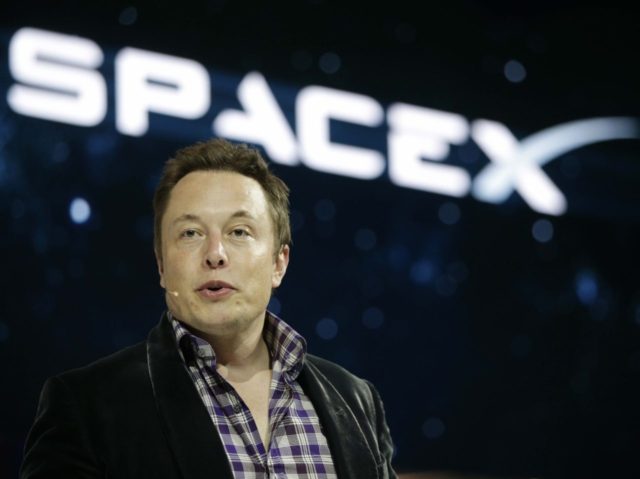North Korea flying missiles over Japan and detonating a potential 100-kiloton hydrogen bomb just turbo-charged what was already the beginning of a Southern California “Star Wars” defense boom.
The 6.3-magnitude quake on September 3 recorded near North Korea’s main testing site indicates that “Dear Respected Comrade” Kim Jong Un likely detonated a thermonuclear bomb with about 10 times more power than a 10-kiloton test carried out a year ago. Unlike fission weapons that split atoms apart to generate explosions, advanced thermonuclear weapons explode a small fission bomb to trigger an exponentially larger fusion blast.
Donald Trump campaigned on the idea that after 16 years of constant military deployments, America’s military equipment was worn out and our weapons systems needed to be replaced and upgraded. When President Trump asked Congress in March for defense increases of $30 billion this year and $54 billion next year, paid for by a 10-12 percent slash in most federal government departments, House Minority Leader Nancy Pelosi (D-CA) responded, “President Trump has shown that he does not value the future of our children and working families.”
But both President Trump and Rep. Pelosi know key components of America’s nuclear triad of land-based intercontinental ballistic missiles (ICBMs), strategic bombers, and submarine-launched ballistic missiles have reached the end of their useful life, and development efforts have been underway in Southern California for decades to upgrade triad systems and add space-based weapons as a fourth strategic defense component.
Southern California aerospace employment peaked just before the Soviet Union’s 1990 collapse, at 273,178 jobs. It then shriveled to a trough of 92,361 in 2015. But according to Price Waterhouse Consulting, “demand for new, emerging technologies – like autonomy, artificial intelligence (AI), cloud computing, cybersecurity, robotics, advanced communications and analytics – is causing the boundaries between traditional aerospace and defense (A&D) and commercial technology companies to blur.”
President Ronald Reagan announced on March 23, 1983 that he was launching the Strategic Defense Initiative (SDI) to protect the American homeland from nuclear annihilation by building space-based lasers to knock-out incoming Soviet intercontinental ballistic missiles (ICBMs). In the last 34 years, the United States has spent more than $239 billion (in 2016 dollars) on the effort.
The Left lampooned the SDI as a “fanciful, technologically implausible concept” and nicknamed space-based weapons systems as “Star Wars.”
President Bill Clinton’s Secretary of Defense Les Aspin declared “the end of the ‘Star Wars’ era” in 1993. Then Clinton gave North Korea $4 billion as incentives under the 1994 “Agreed Framework” to refrain from developing nuclear weapons. But after North Korea sent a two-stage missile over Japan in 1998, Clinton was forced by Congressional Republicans to sign the National Missile Defense Act of 1999, committing the United States to deploying a national missile defense system.
Over the next 18 years, 26 ground-based missile interceptors have been installed at Fort Greely, Alaska, four at Vandenberg Air Force Base in California, and 14 at undisclosed locations. Another 440 SM-3 Block I & II missile interceptors are installed on U.S. and Japanese ships. The number will rise to 440 in 2018, as Poland receives shipments.
Other big development program updates involving Southern California aerospace companies that are about to go into production include Northrup Grumman’s B-21 Third Generation Stealth Bomber and Boeing’s Minuteman IV ICBM with multiple warheads.
Breitbart News reported the SpaceX August launch of the X-37B “Spaceplane,” jointly developed by Lockheed Martin Corp and Boeing’s Phantom Works. The weapons platform is America’s first hunter-killer space-based weapon system. The fleet of X-37Bs is expected to be armed with look-down 150-kilowatt Laser Weapon Systems and Rail Gun Hyper Velocity Projectiles to take out satellites. But the X-37B may also be able to take out North Korean in-flight missiles and disable their ground facilities.
Southern California aerospace revenue up-ticked in 2016 to $18 billion. The industry is now on a hiring boom, led by Aerojet Rocketdyne, AeroVironment Inc., Boeing, Northrup Grumman, Raytheon, GE, Lockheed Martin, Virgin Galactic, Vulcan Stratolaunch and Elon Musk’s Space X. The “Aerospace Engineering Jobs” website lists 15 pages of openings and 300 positions. The average starting aerospace salary is $79,654 a year.

COMMENTS
Please let us know if you're having issues with commenting.